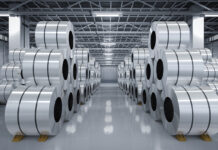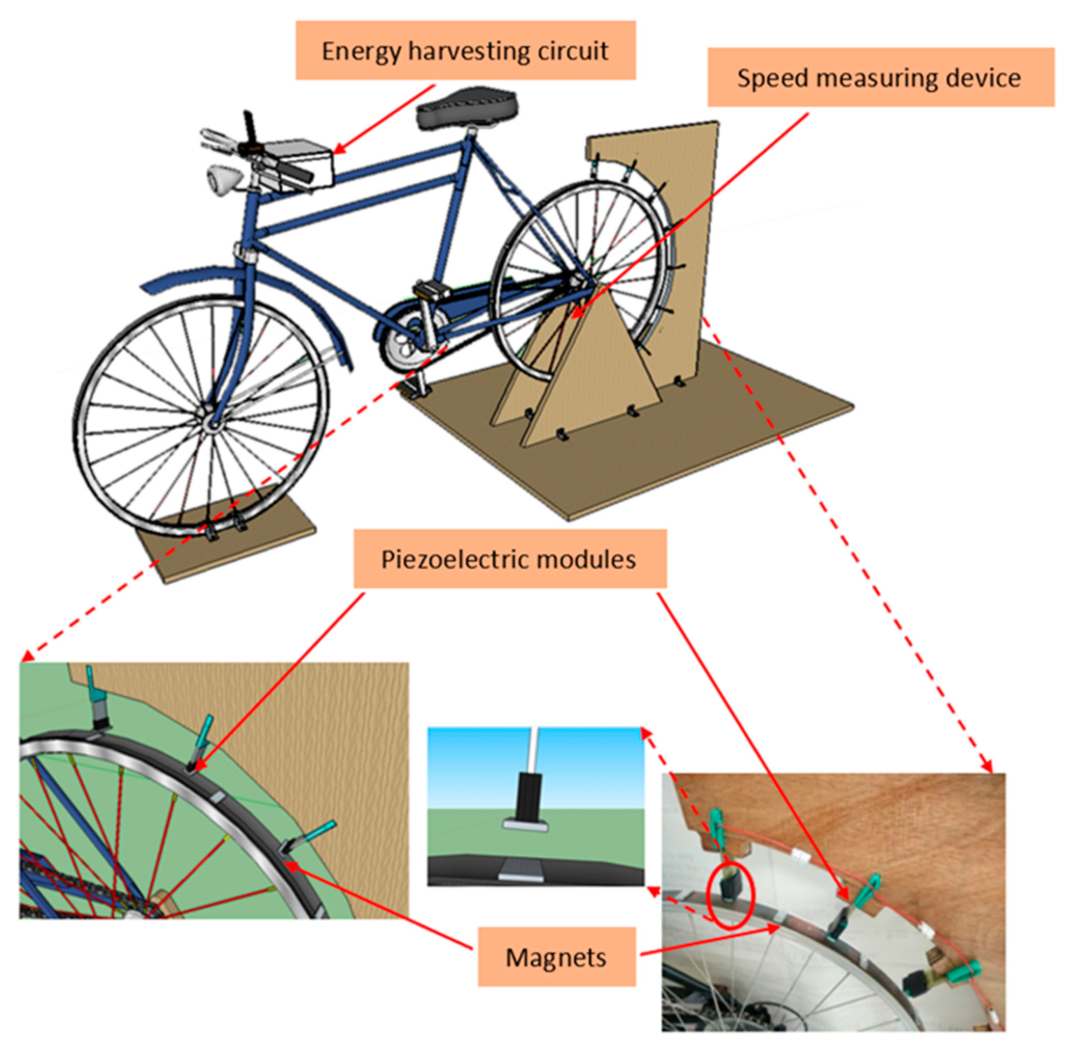Energy gathering advances have been investigated by scientists for over twenty years as an option in contrast to customary power sources (for example batteries) for little estimated and low-power electronic gadgets. The restricted life-time and need for intermittent re-energizing or substitution of batteries has been a predictable issue in versatile, remote, and implantable gadgets. Encompassing energy can as a rule be found as sunlight based energy, nuclear power, and vibration energy. Among these energy sources, vibration energy presents an industrious presence in nature and synthetic designs. Different materials and transduction instruments can change vibratory energy over to valuable electrical energy, for example, piezoelectric, electromagnetic, and electrostatic generators. Piezoelectric transducers, with their innate electro mechanical coupling and high power thickness contrasted with electromagnetic and electrostatic transducers, have been generally investigated to create power from vibration energy sources. An effective audit of piezoelectric energy gathering techniques was done and distributed in this diary by the creators in 2007. Starting around 2007, innumerable scientists have presented novel materials, transduction systems, electrical circuits, and logical models to work on different parts of piezoelectric energy collecting gadgets. Moreover, numerous analysts have additionally announced novel uses of piezoelectric energy gathering innovation in the previous ten years. While the group of writing in the field of piezoelectric energy gathering has developed essentially starting around 2007, this paper presents an update to the writers’ past survey paper by summing up the prominent improvements in the field of piezoelectric energy collecting through the previous ten years.
Unique substance from this work might be utilized under the details of the Creative Commons Attribution 3.0 permit. Any further dissemination of this work should keep up with attribution to the author(s) and the title of the work, diary reference and DOI.
- Presentation
An exhaustive audit on piezoelectric energy reaping innovations was performed by the creators in 2007. Nonetheless, numerous original methodologies have been created beginning around 2007 to upgrade material properties, transducer structures, electrical connection points, prescient models, and the application space of piezoelectric energy reaping gadgets. This article, as an augmentation to the writers’ previous audit article [1], sums up the distributed work on the subject of piezoelectric energy collecting throughout recent years (from 2008 to 2018). It should be noticed that an immense measure of work has been introduced on piezoelectric energy gathering in this stretch of time, which blocks reference of each work, subsequently, this article endeavors to give a compact audit of the most significant investigations in the field. Moreover, refered to works are principally confined to peer-looked into diary distributions to guarantee quality.
Late enhancements in the advancement of little estimated, low-power, compact, and far off gadgets have prompted the presentation of non conventional power sources during the beyond twenty years. Batteries are viewed as traditional energy sources yet experience the ill effects of a few restrictions, for example, restricted life expectancy and power productivity just as restricted energy stockpiling limit, which requires incessant re-energizing. The idea of reaping energy from encompassing sources to kill the requirement for batteries or to broaden their life has turned into a significant focal point of scientists. Energy reaping can possibly broaden the functioning existence of hardware and offers specific application to unavailable gadgets or those subject to expensive upkeep, for example, tangible hubs in distant areas, embedded wellbeing trackers, biomedical gadgets, and enormous scope sensor networks. Energy reaping can be characterized as the immediate change of encompassing energy (mechanical, sun based, warm, wind, liquid stream, and so forth) to electrical energy utilizing a specific material or transduction component. A few energy reaping materials exist, each with an exceptional transformation component that can be utilized for energy collecting. Probably the most well-known energy gathering materials incorporate photovoltaics (sun powered chargers) to change sunlight based energy over to electric energy, thermoelectrics (thermoelectric generators) to change over temperature differentials into electrical energy, and electromechanical transducers (piezoelectrics, electrostatic generators) to change over mechanical vibration energy into electrical energy. Mechanical vibration energy is normal in numerous conditions where energy collecting can be valuable. Vibration energy might exist because of the general climate (for example wind, liquid stream), and furthermore because of functional conditions (for example pivoting apparatus). The presence of various wellsprings of vibration energy is favorable for vibration-based energy collecting strategies rather than different methods by decoupling stochastic ecological impacts from the exhibition of the energy gathering framework.

The transformation of dynamic mechanical energy into electrical energy utilizing piezoelectric materials is commonly called piezoelectric energy reaping. Piezoelectric energy collecting of encompassing vibration generally centers around gathering low-level energy, on the request for microwatts to milliwatts, to drive low-power gadgets. When contrasted with warm and sunlight based energy collectors, which can produce many watts, piezoelectric materials normally work at much lower energy levels. A portion of the benefits of piezoelectric transduction over warm and sun based gathering incorporate the way that surrounding vibrations are frequently persevering because of functional states of a framework, hence, don’t depend on insecure and flighty ecological conditions which can change on schedule. Moreover, piezoelectric collectors are helpful in circumstances where warm and sun oriented energy is missing, and are especially valuable in installed frameworks. It is accounted for that the overall yearly income of piezoelectric gadgets has been expanded from $22 billion out of 2012 to $37 billion of every 2017, which shows a sensational expansion in the interest and use of piezoelectric frameworks.
A few instances of conditions where piezoelectric vibration energy gathering can be utilized incorporate common foundation, for example, structures and extensions, aviation frameworks [29-33], and the human body [34, 35]. For the most part, vibratory energy can be changed over to usable power utilizing piezoelectric, electrostatic, electromagnetic, magnestrictive, and triboelectric convertors. The upsides of piezoelectric generators over different techniques incorporate their innate transduction limit, the conservation of effectiveness as scale is decreased, higher power thickness, and ability to work in high recurrence applications. To catch vibration energy from a construction, a piezoelectric collector should be appended to the host structure so the vibratory energy is adequately moved from the host to the gatherer. Such a mechanical point of interaction can be set up in numerous ways, notwithstanding, the ideal decision is generally directed by the plan imperatives and attributes of the general framework.
Also Read : When 67000 acres of Farmland left to run wild!
Given the way that most piezoelectric reaping frameworks work at the microwatt to milliwatt scale, the most widely recognized use of piezoelectric energy gathering is to give energy to low-drive hardware including installed gadgets, implantable biomedical gadgets, remote sensor hubs, and versatile hardware. Piezoelectric reaping frameworks can give a super durable, independent power source that needn’t bother with substitution or upkeep. Contrasted with customary energy sources, similar to batteries, independent activity can lessen costs related with battery substitution. Moreover, independent power supplies permit electronic gadgets to be inserted into structures or put in far off areas. With ongoing development in low-power gadgets (for example remote sensors, microelectronics), piezoelectric energy collecting has attracted huge consideration the examination local area throughout the most recent ten years. The reason for this paper is to give an outline of headways made in the field of piezoelectric energy gathering throughout the most recent ten years. This survey is coordinated as follows; area 2 examines different piezoelectric materials and arrangements introduced in the writing to reap vibration energy from surrounding sources. Furthermore, the most taken advantage of numerical models just as power molding circuits for piezoelectric generators are momentarily talked about in this segment. Area 3 subtleties as of late proposed gadgets and applications for energy reaping utilizing piezoelectric transducers including power searching from liquid sources, the human body, creatures, framework, and vehicles, and well as multifunctional and multi-source gathering, and different applications. At last, segment 4 gives the creators’ closing comments.
- Piezoelectric energy reaping materials and techniques
Since the revelation of ferroelectric materials, for example, barium titanate (BaTiO3) and lead zirconate titanate (PZT), piezoelectricity has been seen in a heap of manufactured materials as analysts have consistently evolved piezoelectric materials with different electromechanical, mechanical, and warm properties. In this segment, a few piezoelectric materials with upgraded execution contrasted with customary piezoelectric materials are momentarily talked about, and different transducer setups produced for piezoelectric energy collecting are audited. Furthermore, a synopsis of normal numerical models and molding hardware is given.






























